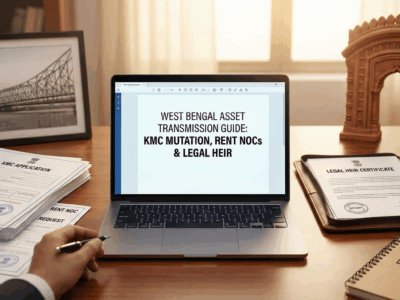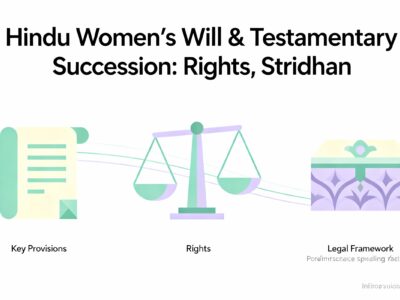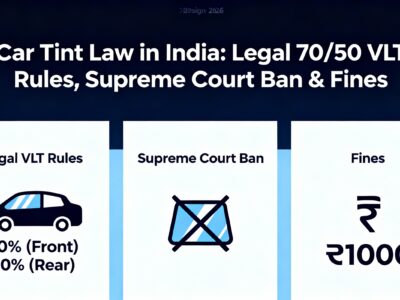Blackmail is a profoundly distressing experience, and in India, it is treated as a serious criminal offense. While there is no single law titled “blackmail,” the legal system provides robust protection under the Indian Penal Code (IPC) for extortion and criminal intimidation, and the Information Technology (IT) Act for cyber-related threats. This comprehensive guide is designed to empower you by demystifying these laws, outlining your rights, and providing a clear roadmap for legal recourse, from filing an FIR to seeking civil remedies.
Blackmail in India is not codified as a standalone offense but is primarily addressed under the Indian Penal Code (IPC), 1860, as "extortion" and "criminal intimidation." With the proliferation of digital communication, the Information Technology (IT) Act, 2000, has become increasingly relevant for cyber-related instances. This report details the legal framework, varying punishments, and multi-faceted recourse available to victims, including criminal complaints, civil suits for injunctions, and compensation for damages. It highlights the critical role of evidence documentation, the importance of prompt reporting, and the growing network of government and non-governmental support services. The evolving legal landscape, particularly with the Digital Personal Data Protection Act, 2023 (DPDP Act), further strengthens privacy protections and accountability. Ultimately, understanding these legal avenues and support systems is paramount for victims to assert their rights and seek justice.
While the term "blackmail" is widely understood in common parlance, Indian statutes do not explicitly define it as a distinct offense. Instead, the various acts that constitute blackmail are covered under existing criminal laws, predominantly the Indian Penal Code, 1860, and, increasingly, the Information Technology Act, 2000, particularly in the digital realm. This section elucidates how these foundational laws address the complex nature of blackmail.
Extortion is a core criminal offense that captures many acts commonly referred to as blackmail. Section 383 of the IPC defines extortion as intentionally putting any person in fear of any injury to that person, or to any other, and thereby dishonestly inducing the person so put in fear to deliver to any person any property, valuable security, or anything signed or sealed which may be converted into valuable security.
The definition of "extortion" in IPC Section 383 employs broad language, specifically "fear of any injury" and the inducement to "deliver... any property, or valuable security." This intentional breadth allows the IPC to encompass a wide array of blackmail scenarios, even those not explicitly enumerated. The term "injury" extends beyond mere physical harm to include harm to reputation or property, as is also evident in the provisions for criminal intimidation. Similarly, "property" and "valuable security" are not limited to tangible assets but can include digital data or documents that hold value, thereby allowing the IPC to remain pertinent in the face of evolving criminal methodologies. This broad applicability ensures that traditional blackmail, where the threat is to reputation (e.g., revealing embarrassing secrets) to extract money, directly falls under the ambit of extortion, even in the absence of physical violence. It also means that digital assets or data, if their loss constitutes an "injury" or if they can be converted into valuable security, can be the subject of extortion.
A critical component of this offense is the element of "dishonest inducement." This particular legal requirement serves to differentiate extortion from legitimate demands, even if those demands are made forcefully. For instance, a creditor threatening legal action if a debt is not paid, while a threat, lacks the dishonest intention to cause wrongful gain to oneself or wrongful loss to another, which is paramount for extortion. This legal nuance signifies that merely threatening to do something, however unpleasant, is insufficient; there must be a proven dishonest motive to extract something valuable. This protects individuals from frivolous complaints where a legitimate demand is made, even if asserted with considerable force. It places the burden on the prosecution to demonstrate the presence of this dishonest intent.
Illustrations provided by the IPC clarify this definition. For example, threatening to publish a defamatory libel concerning an individual unless they give money constitutes extortion. Similarly, threatening to keep a person's child in wrongful confinement unless they sign a promissory note, or threatening to destroy a field unless a bond is signed, all fall under the purview of extortion.
Criminal intimidation, defined under Section 503 of the IPC, offers another crucial legal avenue for addressing blackmail. This section specifies that whoever threatens another with any injury to their person, reputation, or property, or to the person or reputation of anyone in whom that person is interested, with the intent to cause alarm to that person, or to cause that person to do any act they are not legally bound to do, or to omit an act they are legally entitled to do, as a means of avoiding the execution of such threat, commits criminal intimidation.
While extortion specifically targets the delivery of property or valuable security, criminal intimidation encompasses a broader spectrum of threats. These threats are primarily aimed at causing alarm or compelling specific actions or omissions, without necessarily involving the transfer of property. The explicit inclusion of "reputation" in Section 503 makes it a direct legal instrument against many forms of blackmail that rely primarily on damaging a person's standing. This indicates that even if a blackmailer does not explicitly demand money or property but threatens to ruin a victim's reputation to force them into a particular action (e.g., withdrawing a complaint, performing a service), such an act can still be prosecuted under criminal intimidation. This provides a legal recourse for victims even when the blackmailer's objective is not direct financial gain.
The phrase "with intent to cause alarm to that person" underscores that the psychological impact on the victim is a fundamental legal element for criminal intimidation. It is not solely about the threat itself, but its intended effect on the victim's mental state. This means that the subjective experience of fear and alarm, if proven to be the perpetrator's intent, becomes a crucial aspect of establishing the offense. This is particularly pertinent in cyber blackmail cases, where threats might be subtle but are deliberately designed to inflict significant psychological distress. The law thus recognizes and addresses the emotional and mental harm inflicted by such threats. The threat can also be directed at a deceased person's reputation if the threatened individual has an interest in them.
Blackmail, in its practical application, frequently incorporates elements from both extortion and criminal intimidation. When a threat, which in itself could constitute criminal intimidation, is employed to dishonestly induce the delivery of property or valuable security, the act transitions into extortion. Therefore, "blackmail" is typically prosecuted under the IPC as a form of extortion (Section 383 onwards) or criminal intimidation (Section 503 onwards), depending on the specific nature of the threat and the demand made.
The consistent classification of "blackmail" within the IPC under "extortion" and "criminal intimidation" rather than as a separate section heading indicates a deliberate legislative approach. This approach categorizes the act of threatening and inducing based on the specific outcome (property transfer for extortion) or the primary intent (causing alarm for criminal intimidation). This means that a single act of blackmail might trigger multiple IPC sections, allowing for a more robust prosecution. For example, threatening to expose private photos (which could fall under criminal intimidation) to demand money (which is extortion) could lead to charges under both sets of provisions. This provides flexibility for law enforcement and offers stronger legal grounds for victims to pursue justice.
While the IPC does not use the term "blackmail" as a specific section heading, its frequent use in legal and public discourse, as well as within some explanatory materials, suggests that "blackmail" functions as a common parlance term that effectively captures the essence of these distinct legal offenses. This is particularly true when the threat involves sensitive information or reputation. This highlights a potential divergence between common understanding and strict legal definitions. While legal practitioners operate within the established IPC framework, public awareness campaigns should clarify how the colloquial term "blackmail" translates into specific legal charges (extortion, criminal intimidation, or IT Act offenses) to empower victims to report incidents accurately and effectively.
The Indian legal framework addresses blackmail through various sections of the Indian Penal Code (IPC), with punishments varying significantly based on the nature and severity of the threat and the outcome.
This chart provides a clear comparison of the maximum prison sentences for various blackmail-related offenses under the Indian Penal Code.
The IPC outlines a series of sections specifically dealing with extortion and its aggravated forms:
The IPC sections for extortion (384-388) clearly demonstrate an escalation in penalties based on the nature and intensity of the threat. From general "fear of injury" to "fear of death or grievous hurt" and finally "threat of accusation of serious offenses", the maximum imprisonment increases significantly, ranging from three years to ten years, or even life imprisonment. This systematic approach illustrates a legislative intent to penalize more severely those acts that inflict greater fear or leverage more damaging information. This tiered punishment structure provides a framework for courts to impose sentences proportionate to the crime's impact and the perpetrator's malicious intent. It also serves as a deterrent, signaling that threats involving higher stakes, such as those concerning life, severe harm, or grave accusations, will face harsher consequences. For victims, understanding this structure can help them appreciate the seriousness with which the law views their ordeal.
Furthermore, while Section 385 (attempted extortion by fear of injury) is bailable, more severe forms of extortion, including the main offense of extortion (Section 384) and those involving fear of death or grievous hurt (Sections 386, 387), are classified as cognizable and non-bailable. A cognizable offense means the police can arrest without a warrant, and non-bailable means bail is not a right but is granted at the discretion of the court. This classification underscores the gravity of these offenses and facilitates quicker police action, helping to ensure that alleged offenders in serious cases are not easily released, which can potentially protect victims from further harm or intimidation. This is a critical legal protection for individuals facing severe threats.
Another significant aspect is that all listed extortion offenses (Sections 384-388) are explicitly stated as "NOT listed under Compoundable Offences". Compoundable offenses are those where the victim can reach a compromise with the accused and withdraw charges, often with court permission. The non-compoundable nature of extortion means that once a First Information Report (FIR) is filed, the case cannot be simply withdrawn by the victim, even if they reach a private settlement with the blackmailer. This prevents blackmailers from intimidating victims into withdrawing complaints after the fact and ensures that the state pursues justice for serious crimes against society, not just the individual. This reinforces the public interest in prosecuting such offenses, highlighting that these are not merely private disputes but acts that undermine public order.
Criminal intimidation is another critical aspect of blackmail, particularly when the threat does not involve direct property transfer but aims to cause fear or compel actions.
Unlike most extortion offenses, general criminal intimidation (Section 506) is classified as bailable and compoundable. This classification implies that the police cannot arrest without a warrant (non-cognizable), and the victim has the option to withdraw the complaint. Even for aggravated threats under Section 506, the offense remains non-cognizable and bailable. This suggests that the legislature views general criminal intimidation as a less severe offense than extortion, allowing for more flexibility in resolution between parties. However, this also presents a challenge for victims of blackmail, as the ability to compound the offense might expose them to further pressure from the blackmailer to withdraw charges, particularly if the blackmailer's primary objective is control or harassment rather than direct financial gain.
Section 507 specifically adds an additional two years of imprisonment for criminal intimidation committed anonymously. This provision directly acknowledges the increased difficulty in identifying and prosecuting offenders who conceal their identity. This enhanced punishment serves as a deterrent for those who might believe they can evade justice by hiding their identity online. It also implicitly encourages law enforcement to prioritize tracing anonymous digital threats, recognizing the added layer of malice and the challenge it poses to victims and the justice system.
The rapid advancement of digital technology has given rise to new and pervasive forms of blackmail, often referred to as "cyber extortion" or "cyber blackmail." These offenses are addressed under the Information Technology Act, 2000 (IT Act), which complements the existing IPC provisions.
Threatening to leak private, intimate images or videos of a victim. Sending sensitive files and demanding ransom via email. Malware that locks your data and demands a ransom for the key. A hacker seizes sensitive info and threatens to leak it for money.
Cyber extortion, also known as cyber blackmail, is an illegal practice conducted by an individual who holds crucial personal, professional, or commercial data in their possession. The perpetrator, often termed a "cyber extortionist," threatens to leak this data publicly or to rival organizations if a ransom, whether in cash or another form, is not paid. Cybercriminals typically gain unauthorized access by hacking into systems, exploiting security vulnerabilities, or employing deceptive tactics like phishing. Once access is gained, they may block access to victims' computers or overload networks with traffic to enforce their demands.
Several distinct forms of cyber extortion have become prevalent:
While the IT Act specifically addresses cyber offenses, the fundamental elements of "fear of injury" and "dishonest inducement" from the IPC's definitions of extortion and criminal intimidation remain highly relevant. Cyber blackmail is essentially a modern method of committing these traditional crimes, leveraging digital vulnerabilities. Many IT Act sections, such as Section 66E for publishing private images or Section 67 for obscene material, directly criminalize the means or subject matter of cyber blackmail, rather than defining blackmail itself. This implies that a single act of cyber blackmail can lead to charges under both the IPC (e.g., Extortion, Criminal Intimidation) and the IT Act (e.g., for hacking, data theft, or publishing private/obscene content). This dual legal framework allows for comprehensive prosecution of cyber blackmail. For example, a sextortion case might involve charges under IPC Section 384 (extortion) for demanding money, IPC Section 503/506 (criminal intimidation) for the threat, and IT Act Section 66E (publishing private images) or 67/67A (obscene/sexual content) for the digital act. This multi-pronged approach significantly strengthens the legal response against cybercriminals.
The discussions around sextortion consistently highlight the deeply personal and damaging nature of these threats, often involving "sexual videos or private parts of the victim." The threat of public exposure of such content is designed to cause immense "fear, emotional distress or intimidation". This goes beyond mere financial loss and directly targets the victim's dignity, privacy, and psychological well-being. The severe psychological impact of cyber blackmail, particularly sextortion, necessitates a victim-centric approach in law enforcement and support services. It also implicitly argues for stricter penalties and specialized legal provisions that recognize and address the non-pecuniary harm. The legal system must be equipped not only to punish the crime but also to provide comprehensive support for the victim's mental well-being, acknowledging that the trauma can be profound and long-lasting.
The IT Act, 2000, particularly following its significant amendment in 2008, provides specific provisions to address various facets of cyber blackmail and related offenses. These sections criminalize the digital acts that often constitute or facilitate blackmail:
The IT Act sections do not define "blackmail" but instead criminalize the digital means and content frequently involved in cyber blackmail, such as hacking, publishing private images, or transmitting obscene material. This indicates that the IT Act provides specific tools to prosecute the digital components of blackmail, while the IPC offers the broader framework for the act of extortion or intimidation itself. This dual legal framework allows for comprehensive prosecution of cyber blackmail. For example, a sextortion case might involve charges under IPC Section 384 (extortion) for demanding money, IPC Section 503/506 (criminal intimidation) for the threat, and IT Act Section 66E (publishing private images) or 67/67A (obscene/sexual content) for the digital act. This multi-pronged approach significantly strengthens the legal response against cybercriminals.
Sections like 66E, 67, 67A, and 67B specifically target the publication or transmission of private, obscene, or sexually explicit content. This highlights the legislature's recognition of privacy violation and the dissemination of harmful digital content as distinct criminal acts, which are often central to cyber blackmail. This strong emphasis on content and privacy violations provides specific legal avenues for victims of sextortion and revenge porn, even if no direct financial demand is made. The penalties, including substantial fines and imprisonment, reflect the serious harm caused by such privacy breaches. It also underscores the crucial importance of digital evidence in these cases, as the very nature of these crimes leaves a digital trail.
India's legal landscape for data protection has been significantly enhanced with the enactment of the Digital Personal Data Protection Act, 2023 (DPDP Act) on August 11, 2023. While its substantive provisions are yet to be fully notified and enforced as of May 2025, this Act is poised to become India's principal data protection legislation.
The DPDP Act introduces a comprehensive definition of "personal data breach" as any unauthorized processing of personal data or accidental disclosure, acquisition, sharing, use, alteration, destruction, or loss of access to personal data that compromises confidentiality, integrity, or availability. This broad definition covers a wide range of incidents, from cyberattacks to accidental data leaks, directly impacting scenarios relevant to blackmail.
The Act is built upon several key principles, including transparency, ensuring data fiduciaries provide clear and accessible notices to data principals for obtaining specific and informed consent. It mandates a lawful basis for processing personal data, either through consent or for certain legitimate uses. Furthermore, it emphasizes purpose limitation, meaning data should only be processed for the specified purpose for which consent was given, and data minimization, requiring that only necessary personal data is collected for a stated purpose.
A significant institutional development under the DPDP Act is the contemplation of the establishment of the Data Protection Board of India (DPB). This independent body is intended to serve as the primary enforcement and adjudicatory authority, responsible for inquiring into personal data breaches, directing remedial actions, and imposing penalties. The Act prescribes substantial monetary penalties for violations, including fines up to ₹250 crore for failures in implementing reasonable security safeguards leading to a breach, and ₹200 crore for breaches not reported in a timely manner or for violations related to children's data.
The DPDP Act, even before full implementation, signals a strategic shift towards a more robust data protection regime. By mandating "reasonable security safeguards" and imposing hefty penalties for breaches, it moves beyond merely punishing reactive offenses to encouraging proactive prevention, holding data fiduciaries accountable for data security. For victims of blackmail involving personal data, especially if the data was compromised due to a breach by an entity, the DPDP Act could potentially provide additional avenues for redress and compensation once fully implemented, complementing existing provisions like Section 43A of the IT Act. This also creates a stronger incentive for organizations to protect data, indirectly reducing the pool of vulnerable data for cybercriminals.
Moreover, the DPDP Act builds upon the recognition of privacy as a fundamental right under Article 21 of the Constitution. Its detailed provisions for consent, data minimization, and breach notification aim to operationalize this right in the digital sphere. This comprehensive privacy law will significantly strengthen the legal standing of victims whose personal data is misused in blackmail schemes. It provides a clearer framework for defining "privacy violation" and assigning liability, which can be leveraged in both criminal and civil proceedings related to blackmail, particularly in cases of sextortion where the violation of privacy is paramount.
Victims of blackmail in India have established legal pathways to report the crime and initiate proceedings. Prompt action and meticulous documentation are crucial for a successful outcome.
Save all communication: emails, text messages, chat logs, and call recordings. Do not delete your profiles or messages. This digital evidence is vital.
Visit your nearest police station and file a First Information Report (FIR) for cognizable offenses like extortion. For cyber blackmail, consider the Cyber Crime Cell or the National Cyber Crime Reporting Portal.
You can seek a civil injunction to stop the blackmailer from publishing private information. This is a powerful tool to prevent irreparable damage to your reputation and privacy.
Use this template to draft your First Information Report (FIR) and ensure all key details are included. Present this to the police for registration.
To, The Station House Officer, Police Station: [Police Station Name] District: [District Name] State: [State Name] FIR No: [To be filled by the police] Date & Time of Registration: [To be filled by the police] Subject: Complaint under IPC Sections for Extortion and/or Criminal Intimidation, and relevant sections of the IT Act, 2000. Respected Sir/Madam,
I, [Your Full Name], son/daughter of [Father's/Mother's Name], residing at [Your Full Address], wish to file a formal complaint regarding the following incident of blackmail. My contact number is [Your Contact Number] and my email address is [Your Email Address].
I am being blackmailed by [Name of Accused, if known, or "an unknown individual"], residing at/operating from [Accused's Address/Digital Handle/IP, if known, or "an unknown location"].
Details of the Offence: Date and Time of Occurrence: [Date and Time of the incident] Location of Occurrence: [Physical address or digital platform, e.g., "WhatsApp," "Email," "Facebook"] Method of Blackmail: [Describe how the blackmailer is communicating with you. E.g., "sending threats via WhatsApp messages and emails."] Details of the Threat: [Clearly state what the blackmailer is threatening to do. E.g., "threatening to publish private photographs/information on social media."] Nature of Demand: [Explain what the blackmailer is demanding. E.g., "demanding a ransom of ₹50,000 to be transferred to a specific bank account."] Brief Narrative of the Incident: [Write a clear, concise, and chronological account of the events. Include dates, times, and specific details of the communications and demands. Mention if any money has been paid.]
I have preserved all evidence related to this crime, including screenshots of messages, emails, and transaction details, and am ready to submit them for your investigation.
I request you to kindly register this as an FIR and take immediate action to investigate this matter and apprehend the accused as per the relevant sections of the Indian Penal Code and the Information Technology Act.
Thank you. Yours sincerely,
[Your Signature]
Victims of blackmail in India are afforded various protections and remedies, encompassing both criminal prosecution of the offender and civil avenues for personal redress.
The Indian legal system provides robust criminal protections for blackmail victims, primarily through the IPC and IT Act. As detailed in Sections 2 and 3 of this report, offenders face significant imprisonment terms and fines under relevant sections of the IPC (Extortion, Criminal Intimidation) and the IT Act (cyber offenses such as privacy violation, publishing obscene material, and hacking).
For severe forms of extortion, the offenses are classified as cognizable, meaning the police can arrest without a warrant, and non-bailable, implying that bail is not a right but is granted at the discretion of the court. This classification ensures that the offender is held accountable and potentially prevents further harm or intimidation to the victim. The non-compoundable nature of most extortion offenses further reinforces this protection; once an FIR is filed, the case cannot be simply withdrawn by the victim, even if a private settlement is reached. This characteristic signifies that these are not merely private wrongs but crimes against society, and the state assumes the responsibility for prosecution, even if the victim wishes to withdraw the complaint. This prevents blackmailers from intimidating victims into silence or offering private settlements, reinforcing public policy against such coercive acts and ensuring that the legal system will continue to pursue the case.
Beyond prosecution, victims are also protected against retaliatory threats or harassment. It is a violation of federal law to threaten, harass, or intimidate victims or witnesses of a crime. Victims are advised to immediately contact their case agent if such threats occur to discuss protective measures. The mention of protection against threats to victims or witnesses highlights the recognition of potential retaliation. This indicates that legal protections extend to the safety and well-being of the victim during and after the legal process. While the provided information is general, its applicability to blackmail victims is direct, implying that law enforcement has a duty to provide protection, which is a vital right for victims facing ongoing threats.
In addition to criminal prosecution, victims can pursue civil remedies to prevent further harm and obtain personal redress. A key civil remedy is an injunction, which is a specific legal order issued by a court to prevent a wrongful act or its continuation until the disposal of the case.
Various types of injunctions are available: preliminary (ad-interim), preventive (prohibitory), mandatory, temporary (interlocutory), and permanent (perpetual). The primary purpose of these injunctions is to preserve the status quo, prevent threatened injury, or stop ongoing wrongful acts, such as the publication of private information. The legal basis for injunctions in India is primarily governed by the Specific Relief Act, 1963, and the Code of Civil Procedure, 1908.
For a court to grant an injunction, the applicant must satisfy three conditions:
While criminal law punishes past acts, civil injunctions offer a forward-looking remedy to prevent future harm, particularly the dreaded public dissemination of sensitive information. The "irreparable loss" criterion is key here, as reputational damage or privacy breaches are often difficult to quantify or reverse. This means that victims of blackmail, especially sextortion or threats to expose sensitive data, have a powerful legal tool to stop the act before it causes irreversible damage. The legal system prioritizes preventing harm when the potential loss is immeasurable, empowering victims to act quickly in civil court to safeguard their privacy and reputation.
Courts exercise "exceptional caution" in granting pre-publication injunctions, particularly in defamation cases, as this involves balancing freedom of expression with the right to privacy. However, the increasing recognition of the "right to privacy" in the internet age creates a tension with freedom of expression. This indicates a complex legal tightrope walk for courts. While freedom of speech is fundamental, it is not absolute, especially when it infringes on another's fundamental right to privacy. The emergence of the DPDP Act further strengthens the privacy argument. This implies that while obtaining an injunction against publication might be challenging, especially if the blackmailer claims truth, courts are increasingly sensitive to privacy violations, particularly concerning intimate or personal data. In some cases, courts may even consider de-indexing online publications to mitigate harm.
Victims can also file a direct civil case for harassment, seeking compensation or an injunction to stop such acts, particularly if the blackmailer attempts to dispose of property or force actions without consent.
Victims of blackmail can seek monetary compensation for the harm suffered, including for emotional distress, through civil litigation.
Under Tort Law, victims can seek damages for physical and emotional harm caused by the blackmailer's intentional or negligent acts. The types of damages that can be claimed include monetary compensation, damages for pain and suffering, and for emotional distress. In some cases, punitive damages may also be awarded, intended to punish the wrongdoer and deter similar behavior in the future. Emotional distress, in a legal context, refers to mental suffering in response to events or conditions caused by someone else, requiring specific evidentiary criteria beyond simple symptoms of anxiety or depression. Claims for emotional distress can fall under Intentional Infliction of Emotional Distress (IIED), where the perpetrator intentionally or recklessly causes distress, or Negligent Infliction of Emotional Distress (NIED), where the distress results from the perpetrator's negligence. To substantiate such claims, victims need to provide robust evidence, including medical records, psychological diagnoses, witness statements, and personal journals documenting their experiences.
While IPC definitions of "injury" are broad, the explicit mention of "emotional distress" and "mental harassment" as grounds for civil compensation signifies a growing recognition in Indian jurisprudence of psychological harm as a compensable damage. This moves beyond purely physical or financial losses. This is a significant right for blackmail victims, whose suffering is often primarily psychological. It allows them to seek tangible redress for the intangible but profound harm caused, affirming that mental well-being is a legally protected aspect of an individual's rights. It also encourages victims to seek professional mental health support, as medical records can serve as crucial evidence in proving the extent of their suffering.
Furthermore, the Consumer Protection Act, 2019, also recognizes mental harassment and inconvenience as valid grounds for compensation in consumer complaints, for instance, due to unethical business practices, unreasonable delays in service, or service deficiencies. Courts, when awarding compensation for mental harassment under this Act, consider factors such as the severity of the psychological impact, the duration of the harassment, and the conduct of the opposite party.
The legal basis for personal injury claims, including those for emotional distress, is rooted in Article 21 (Right to Life and Personal Liberty) of the Constitution of India. This fundamental right has been interpreted to include the right to live with human dignity, which encompasses the right to seek compensation for harm suffered due to negligence or wrongful actions. The legal framework clearly distinguishes between criminal prosecution (aimed at punishment) and civil remedies (aimed at compensation and prevention). The legal principle that "where a tort also constitutes a criminal offence, its prosecution by the state does not preclude the aggrieved party from seeking a remedy under tort law" is crucial. This means victims are not forced to choose between seeing their blackmailer punished and receiving personal compensation. They can pursue both simultaneously or sequentially, offering a more complete form of justice. This holistic approach empowers victims to recover from the ordeal, both legally and financially, and ensures accountability on multiple fronts.
Victims of blackmail, particularly cyber blackmail, often experience significant distress and require immediate support and legal assistance. India offers a network of government and non-governmental organizations dedicated to providing such aid.
The Indian government has established several helplines and initiatives to assist victims of crime, including blackmail:
Complementing government initiatives, several NGOs and legal aid services play a crucial role in supporting blackmail victims:
The existence of NGOs like Aks Foundation (gender-based violence), PARI (sexual violence), and platforms like StopNCII.org (non-consensual intimate images) indicates a recognition of the unique and often gendered nature of certain blackmail types, such as sextortion. These organizations provide specialized counseling, legal advice, and practical assistance (like content removal), complementing formal legal channels. This signifies a crucial ecosystem of support that often fills gaps in immediate psychological support and practical assistance that government agencies might not fully cover. For victims, this means a wider network of resources tailored to the specific trauma of blackmail, particularly those involving intimate content.
Blackmail in India is a complex criminal act addressed through a multi-layered legal framework, primarily encompassing "extortion" and "criminal intimidation" under the Indian Penal Code (IPC), and specific cyber-related offenses under the Information Technology (IT) Act, 2000. The recent Digital Personal Data Protection Act, 2023 (DPDP Act), further strengthens privacy rights and accountability for data breaches, adding another critical dimension to victim protection.
The analysis consistently demonstrates that effectively addressing blackmail requires more than just legal prosecution. It necessitates a multi-disciplinary approach involving law enforcement, legal professionals, mental health experts, and specialized NGOs. The legal framework itself is complex, spanning the IPC, IT Act, and now the DPDP Act, and the nature of harm extends beyond financial to profound psychological distress. This implies that victims need integrated support, not fragmented services. A truly victim-centric approach would involve seamless referrals between police, cyber cells, legal aid, and counseling services. This also suggests a need for cross-training among these professionals to better understand each other's roles and limitations in supporting blackmail victims.
Many forms of cyber blackmail, especially sextortion, exploit a victim's lack of digital awareness or trust. The emphasis on "safety precautions" such as understanding that "the internet never forgets or forgives" and never allowing anyone to "capture any private part" points to a root cause in digital literacy. While legal remedies are reactive, a long-term strategy to combat cyber blackmail must include widespread digital literacy and online safety education. Empowering individuals with knowledge about data privacy, secure online behavior, and the risks of sharing sensitive information can significantly reduce vulnerability to such crimes, thereby diminishing the pool of potential victims and shifting some focus from solely punishing offenders to proactively preventing victimization.
Legal Rights and Recourse for Victims of Blackmail in India
Executive Summary
1. Introduction: Defining Blackmail in the Indian Legal Context
1.1 Understanding "Extortion" under the Indian Penal Code (IPC)
1.2 Understanding "Criminal Intimidation" under the IPC
1.3 The Interplay of Blackmail, Extortion, and Criminal Intimidation
2. Key Legal Provisions and Punishments
Visualizing the Penalties: IPC Provisions
2.1 IPC Provisions for Extortion (Sections 383-388)
Table 1: IPC Sections Related to Extortion and Punishments
Section
Description of Offence
Punishment (Max)
Cognizable/Non-Cognizable
Bailable/Non-Bailable
Triable By
Compoundable
IPC 383
Extortion (Definition)
-
-
-
-
-
IPC 384
Punishment for Extortion
3 years + Fine
Cognizable
Non-Bailable
Any Magistrate
Non-Compoundable
IPC 385
Putting person in fear of injury to commit extortion
2 years + Fine
Cognizable
Bailable
Any Magistrate
Non-Compoundable
IPC 386
Extortion by fear of death/grievous hurt
10 years + Fine
Cognizable
Non-Bailable
Magistrate First Class
Non-Compoundable
IPC 387
Putting person in fear of death/grievous hurt to commit extortion
7 years + Fine
Cognizable
Non-Bailable
Magistrate First Class
Non-Compoundable
IPC 388
Extortion by threat of accusation of serious offense (including S. 377)
10 years + Fine (or Life for S. 377)
Cognizable
Bailable
Magistrate First Class
Non-Compoundable
2.2 IPC Provisions for Criminal Intimidation (Sections 503, 506, 507)
Table 2: IPC Sections Related to Criminal Intimidation and Punishments
Section
Description of Offence
Punishment (Max)
Cognizable/Non-Cognizable
Bailable/Non-Bailable
Triable By
Compoundable
IPC 503
Criminal Intimidation (Definition)
-
-
-
-
-
IPC 506 (General)
Punishment for Criminal Intimidation
2 years + Fine
Non-Cognizable
Bailable
Any Magistrate
Compoundable
IPC 506 (Agg.)
Punishment for Aggravated Criminal Intimidation
7 years + Fine
Non-Cognizable
Bailable
Magistrate First Class
Compoundable
IPC 507
Criminal Intimidation by Anonymous Communication
2 years (additional to 506)
Non-Cognizable
Bailable
Any Magistrate
Likely Compoundable (as 506)
3. Cyber Blackmail: Legal Framework under the Information Technology (IT) Act, 2000
Sextortion
Email Extortion
Ransomware
Data Blackmail
3.1 Definition and Common Forms of Cyber Extortion/Blackmail (Sextortion, Email Extortion, Ransomware)
3.2 Relevant Sections and Penalties under the IT Act
Table 3: Key IT Act Sections Applicable to Cyber Blackmail
Section
Offence
Penalty (Max)
IT Act 65
Tampering with computer source documents
3 years + ₹2,00,000 fine
IT Act 66
Hacking with computer system
3 years + ₹5,00,000 fine
IT Act 66B
Receiving stolen computer/communication device
3 years + ₹1,00,000 fine
IT Act 66C
Using password of another person (Identity Theft)
3 years + ₹1,00,000 fine
Cheating using computer resource (Personation)
3 years + ₹1,00,000 fine
IT Act 66E
Publishing private images of others (Privacy Violation)
3 years + ₹2,00,000 fine
IT Act 66F
Cyber Terrorism
Life imprisonment
IT Act 67
Publishing obscene material in electronic form
5 years + ₹10,00,000 fine (first) / 7 years + ₹10,00,000 fine (subsequent)
IT Act 67A
Publishing images containing sexual acts
7 years + ₹10,00,000 fine (first) / 7 years + ₹10,00,000 fine (subsequent)
IT Act 67B
Publishing child pornography
5 years + ₹10,00,000 fine (first) / 7 years + ₹10,00,000 fine (subsequent)
IT Act 72
Breach of confidentiality and privacy
2 years + ₹1,00,000 fine
IT Act 43A
Compensation for failure to protect data
Damages by compensation (no specific limit mentioned)
3.3 Data Protection and Privacy under the Digital Personal Data Protection Act, 2023
4. Legal Recourse and Reporting Procedures for Victims
Document Everything
File a Police Complaint
Seek Civil Remedies
5. FIR Pro Forma: A Step-by-Step Template
[Your Full Name]
6. Victim Protections and Remedies
6.1 Criminal Protections and Prosecution
6.2 Civil Remedies: Injunctions against Publication and Harassment
Table 5: Civil Remedies for Blackmail Victims
Remedy Type
Purpose
Legal Basis
Key Conditions for Granting
Injunctions
Preventive/Prohibitory Injunctions
To stop wrongful acts (e.g., publication of private information, continued harassment)
Specific Relief Act, 1963; Code of Civil Procedure, 1908
Prima Facie Case, Balance of Convenience, Irreparable Loss
Mandatory Injunctions
To compel a party to perform an act (e.g., return property)
Specific Relief Act, 1963; Code of Civil Procedure, 1908
Prima Facie Case, Balance of Convenience, Irreparable Loss
Temporary/Interlocutory Injunctions
To maintain status quo during pendency of the case
Specific Relief Act, 1963; Code of Civil Procedure, 1908
Prima Facie Case, Balance of Convenience, Irreparable Loss
Permanent/Perpetual Injunctions
To provide long-term protection after final judgment
Specific Relief Act, 1963; Code of Civil Procedure, 1908
Prima Facie Case, Balance of Convenience, Irreparable Loss
Civil Suit for Harassment
To seek compensation for non-economic harm and stop harassment
Law of Torts; Consumer Protection Act, 2019
Proof of harassment, evidence of harm, intent for compensation/injunction
6.3 Compensation for Damages, including Emotional Distress
7. Support Services and Legal Aid for Victims
7.1 Government Helplines and Support Initiatives
7.2 Non-Governmental Organizations (NGOs) and Legal Aid Services
8. Conclusion and Recommendations
Key Takeaways:
Recommendations for Victims:
Recommendations for Policy and Practice:
What is your reaction?
Excited
0
Happy
0
In Love
0
Not Sure
0
Silly
0









